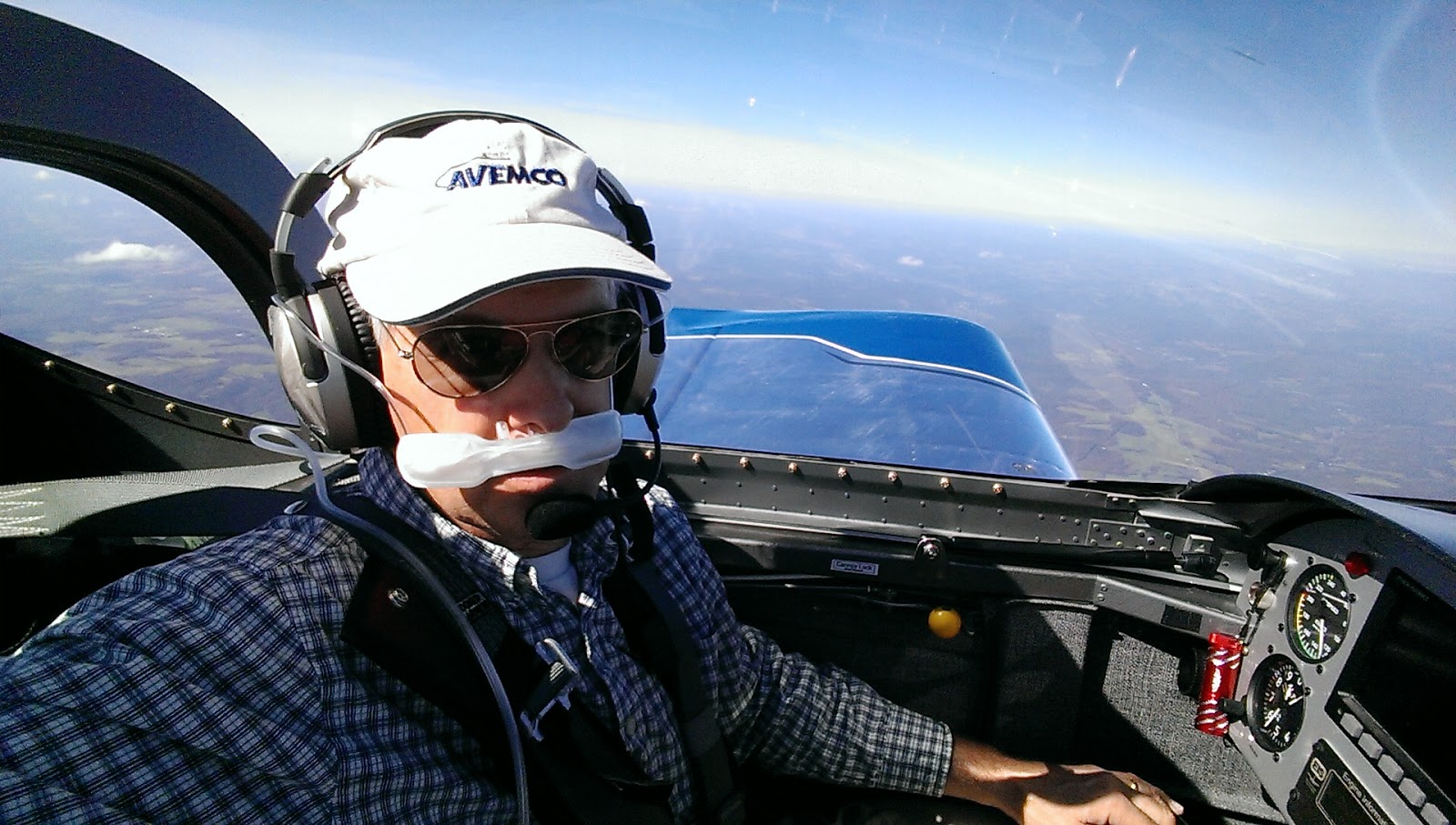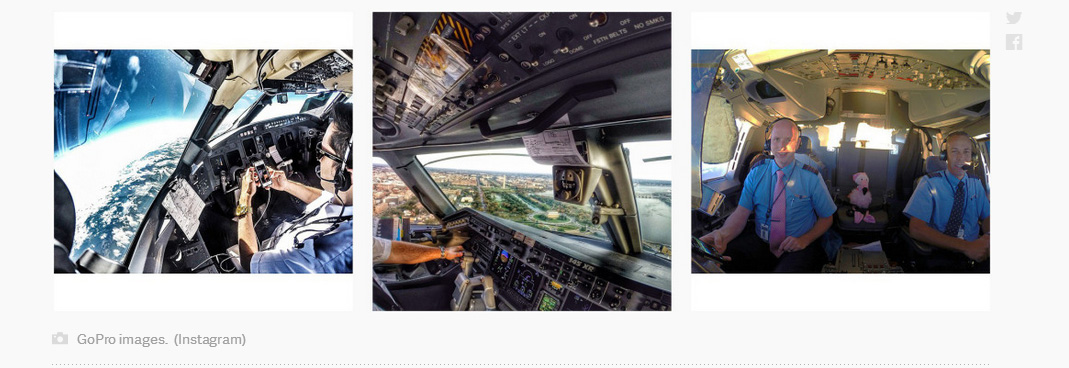
NPR listeners could’ve benefitted from a little more aviation expertise and a tad less hyperbole in its story on All Things Considered this evening, stemming from yesterday’s story about a plane crash in Colorado in which the National Transportation Safety Board suggested the pilot was taking selfies when he lost control of his airplane in miserable weather conditions.
NPR’s guest on the story was writer David Yanofsky, who was looking through Instagram pictures a few months ago and found too many selfies taken in the cockpit of airliners. His article in Quartz sparked a fierce — occasionally, irrational — backlash from many commercial pilots.
Here’s this afternoon’s story.
-
Audio not found
There’s much more context to the story than merely suggesting pilots in general are ignoring an FAA ban. To start, Tuesday’s story had nothing to do with commercial pilots or the ban.
“Up until yesterday, there was no NTSB report has ever cited photographs as the reason for a crash,” Yanofsky said.
That’s incorrect. The NTSB didn’t rule that the cause of the Colorado crash was a pilot taking selfies. It ruled that the cause was a wing stall in the clouds with the pilot likely becoming disoriented. That happens all the time. The NTSB noted the pilot wasn’t “current” in his instrument rating. According to the Aviation Safety Foundation, the average life expectancy for a VFR pilot who strays into the clouds is about 3 minutes.
In the absence of proof, the NTSB theorized that the reason the pilot became disoriented was because he was probably taking selfies, as he had on a flight somewhat earlier. Maybe. But NTSB investigations are usually more fact-based than this.
Comparing the actions of the pilot in the Colorado crash to professional airline pilots is beyond absurd, however.
“The real concern with any industry is a culture of rule breaking and you don’t want to have any profession looking at the laws that govern them and say, ‘Oh, this set of rules doesn’t apply to me,'” Yanofsky said.
It’s important to remember when and why the FAA clamped a ban on the use of personal electronic devices in the cockpit. It was a response to several incidents, including Northwest Flight 188, the pilots of which were so distracted, apparently because they were on their laptops, that they forgot to land in Minneapolis St. Paul in October 2009. That suggests a greater concern than simply snapping a picture.
But picture-taking is still allowed in the cockpit.
In its final rule, issued last February, the FAA specifically noted that pilots riding in a “jump seat” are excluded from the ban. That’s significant because several of the photographs Yanofsky provided in his original Quartz article, were taken by pilots in a jump seat. There was nothing illegal about them.
Other images posted in the Quartz article included those from corporate pilots, not scheduled airlines and, thus, aren’t covered by the rule.
Between that and the jump seat, two of these three pictures that accompanied the Quartz article appear to be legal, then.
Minnesota-based airline pilot Sam Weigel reminded me in the original post I made on the subject last December, that it is entirely legal to snap a photograph with a camera, and download the image from an SD card later.
It actually wasn’t illegal to use cameras (or other personal electronic devices) in the cockpit when out of the sterile environment (above 10,000 ft) until just earlier this year. The new regulation, belatedly passed largely because of NW188, actually prohibits the use of “personal wireless communications devices” and laptop computers. Some digging into the definition of personal wireless communications device basically means any device that is capable of sending or receiving information wirelessly. It obviously includes smartphones, but does *not* include point-and-shoot cameras that don’t have wifi/bluetooth capability. So theoretically, selfie-taking pilots could be perfectly legal if they’re doing it above 10k feet with an old point-and-shoot, and are waiting until on the ground to take the SD card out, load the pic to a laptop, and then upload it to instagram. I’ve done this for years for pics for my blog, even before the new rule – but only at cruise altitude.
Now if the question is safety rather than legality, I guess you have to determine whether taking the pictures was actually distracting from tasks that needed to be accomplished. At cruise there are virtually none, they are all done automatically now, and the pilot’s sole function is to monitor…for hours on end…a task that humans are eminently poorly suited for. I’d argue that looking outside and taking the occasional snapshot of something interesting is at least showing alertness. They’re far more likely to catch something wrong than a pilot reading the newspaper or studying the inside of their eyelids (two other prohibited activities, but ones that aren’t unknown in cruise). I personally have a road atlas I often follow our progress on, and yeah, when I see something interesting, I’ll take a shot. I just don’t upload it to instagram.
If a pilot is taking pics during a still legal (over 10k’) but taskload-intensive phase of flight such as descent, that does arguably have an impact on safety, and they’re being doubly stupid for uploading it.
It’s reasonable to suspect, however, that some pilots are taking an occasional selfie. Whether that’s significant of a rampant culture of law-breaking is open to debate.
Yanofsky pointed out the FAA has no intention of issuing any special advisory after the Colorado story and there’s probably a good reason for that: It doesn’t see the threat that Yanofsky sees, nor believe there’s a culture problem at the front of the plane.
For the record, there’s no mention of “selfies” or “photographs” in the language of the FAA rule, though they would be covered because a cellphone can take a picture. The FAA doesn’t want pilots to be like the two on Flight 188 and have their heads buried in a website when they should be flying the plane. The rule had to outlaw a device, because it was impractical to pick and choose which of all the things a device can do constitutes a legitimate threat to safety.

